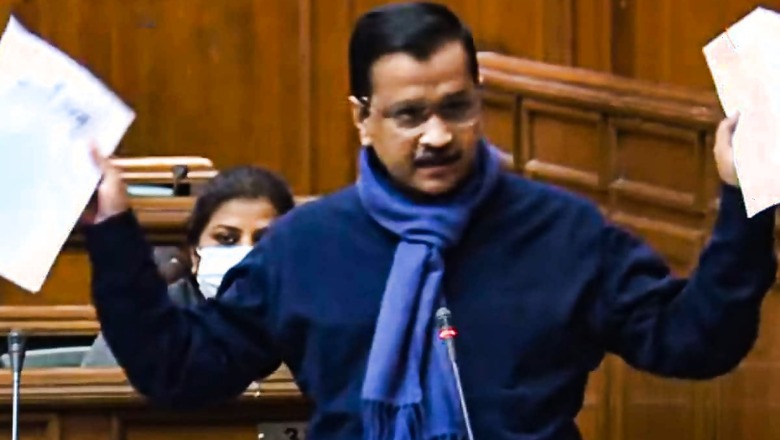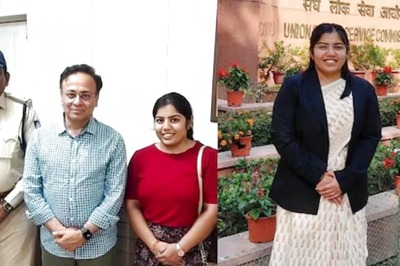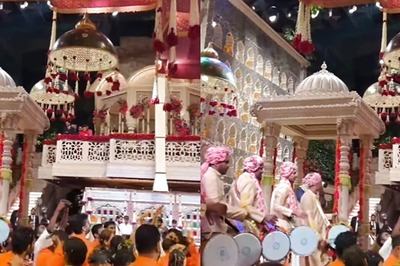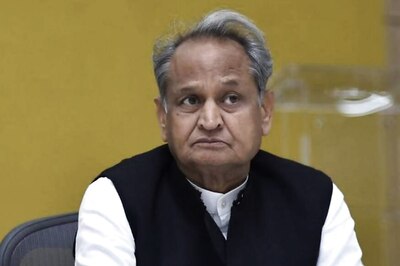
views
Delhi’s deputy chief minister Manish Sisodia was in Dehradun this week to engage Uttarakhand’s education minister Madan Kaushik in a debate. A few days ago he had travelled to Lucknow to draw his Uttar Pradesh counterpart into a similar discussion. Since the beginning of last month, the leadership of Aam Aadmi Party (AAP), the ruling outfit in Delhi, has all of a sudden started to visit different states going to polls in the next year or so and throwing muck on the ruling establishments there.
It started with one of its prominent legislators inviting the power minister of Goa for a debate on electricity tariff. Then its second-most prominent leader, deputy chief minister of the national capital Manish Sisodia, started hopping between Lucknow, Haldwani and Dehradun, tom-tomming the Delhi model of governance and throwing gauntlets at his counterparts in the two states.
Another prominent AAP legislator, Atishi Marlena, was in Gujarat, unveiling the party’s plans to contest first the local body polls and then the state assembly polls. In Delhi, as written in these columns earlier, they have been working overtime to woo agitating farmers laying siege to the national capital.
AAP leaders have also travelled to Punjab, promising ‘legal help’ for cases against the agitating farmers. Punjab too goes to polls in just about a year’s time and it’s one state, outside Delhi, where AAP has a reasonable presence. Why such rush to visit the capitals outside their own state?
A close analysis of the moves would show that other than Punjab, AAP doesn’t have presence, history, or a real intention to gain power in the aforementioned states, and Assam, which are going to polls over a period of one to two years. Then why such sudden and aggressive campaigning when the national capital has its own cup of misery full and waiting to spill over.
This is not the first time that such an effort is being made. AAP’s attempt at expanding its base beyond Delhi and Punjab by contesting the 2017 Goa assembly polls with much fanfare, thinking it could replicate its Delhi poll campaign model in another small state, met with great disappointment as it failed to even open its account. One of the main reasons for the party’s defeat in Goa was the fall of the façade of AAP being an anti-graft crusader party.
Some also blame disproportionate media coverage to AAP during the Goa polls leading to an unrealistic expectation of a major show by the party, which neither had any organisation or cadre in the state. Its Goa dream once again turned into a nightmare when it could win just one of the 20 seats it contested in the local body polls in 2020.
Its aggressive wooing of agitating Punjab voters emanates from the fact that during the last Lok Sabha polls in 2019, not only its seat count came down from four to one but its vote share too shrunk from over 24 per cent in 2014 to just about seven per cent. The biggest gainer of the vote bank shift in Punjab has been the Congress.
AAP’s political rise so far has been propelled by poaching of Congress votes. The party which ruled Delhi for 15 years at a stretch, suddenly lost its votes to AAP in the three consecutive assembly polls in 2013, 2015 and 2020, unable to open its account in the last two. Intriguingly, despite being in power in Delhi, in the 2019 Lok Sabha polls, AAP was pushed to third place behind the BJP and Congress. However, six months later, AAP was back in the saddle after the assembly polls and Congress back to zero. How and why this happened has been discussed in these columns earlier.
Now coming to the states of Gujarat, Uttar Pradesh and Uttarakhand, where AAP is making aggressive moves once again to make its presence felt. It must be noted that it’s not the first time that AAP is trying to break into the poll scene of these states.
Soon after resigning as chief minister of Delhi, Arvind Kejriwal, still enjoying the ‘unblemished’ image of anti-graft crusader, had led the party’s campaign in UP during the 2014 Lok Sabha polls, himself contesting against the BJP’s then prime ministerial candidate Narendra Modi. Two other prominent faces of the party at the time – Kumar Vishwas and Shazia Ilmi – had contested the Amethi and Ghaziabad seats respectively.
However, their attempt to enter Parliament on the high tide of popularity of the Anna Hazare movement had come a cropper, logging less than one per cent of the popular vote in Uttar Pradesh and just about one per cent in Uttarakhand. Thereafter, in the 2017 Punjab assembly polls, despite a media hype, AAP’s performance was much below expectations with almost 25 candidates losing deposit and the party managing to win just 20 of the 117 seats in the House.
However, now with a return to power in Delhi, the party is out shopping again in the states which go to polls over the next two years. And the real target may not be winning a majority in the assembly polls but to gain national party status before the 2024 Lok Sabha elections.
AAP continues to be a state party and to get national party status before 2024 it has to be recognised as a state party in at least four states by securing a minimum of 6 per cent votes in each. And what better way than to create a buzz in states going to polls and garner some votes, which as of now looks to be a near-impossible task.
Read all the Latest News, Breaking News and Coronavirus News here




















Comments
0 comment